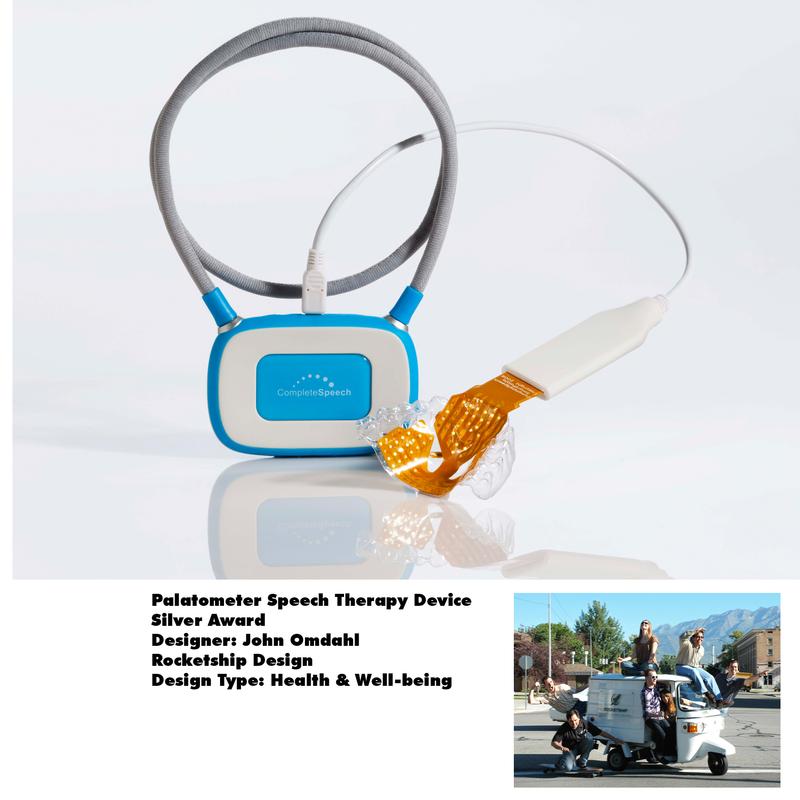2024 Galleries
The Spark Gallery pages are one of our most popular design destinations, with thousands of visitors each year. Check out some of the latest Spark entries, in the galleries below.
Galleries // 2012 Spark:Product // Palatometer
Palatometer
Winner - Silver
Competition: Spark:Product
Designer: Mr. Michael Horito - Director
Design Type: Speech Therapy Device
Website: http://www.rocketshipdesign.com
The Palatometer was created to improve the speech therapy process, humanize the experience, and decrease therapy duration. Speech professionals cannot see inside the mouth while a student is speaking in order to see where the tongue is touching the roof of the mouth. Correct tongue-to-palate contact is vital for proper pronunciation. Whether young or old the tongue must make contact with certain points on the roof of the mouth to make the correct “r”, “s”, “l” or other consonant sounds. Traditional speech training requires the speech professional to use a variety of probes to see where the tongue is touching the palate in order to instruct the student where their tongue should be. The problem is that the student cannot speak normally when something is inside their mouth. The Palatometer allows the speech professional to see where the tongue is touching the roof of the mouth without impeding the speech of the student. Seeing tongue-to-palate contact permits the speech professional to demonstrate where the tongue should be for the student to mimic. The Palatometer components (Software, the Data Link and Smart Palate) combine to create a lightweight system that visually maps tongue movement. Test models and competitive products have a clinical feel and are noticeable heavy. In contrast, the palatometer has a friendly and approachable design language that invites users to wear the lightweight product, with a combined weight of approximately 3.25 ounces. A quick connect magnetic lanyard was developed, allowing users to easily remove the palatometer when worn around the neck. This custom lanyard feature is especially helpful when working with clients who have difficulty putting items over their head, such as stroke survivors. Users or clients work side by side with a speech therapists who visually review persistent speech issues by wearing the palatometer. The palatometer maps the movement of the tongue when speaking. This information is displayed on screen via proprietary software. Once the clients misarticulation patterns are identified, the speech therapists, who also wears a palatometer, demonstrates correct tongue placement. This information is also displayed visually on a computer screen. Working side by side and in real-time, the therapist demonstrates how to use the tongue to create the correct sound and the client mimics the pattern displayed on screen to train the tongue and thereby create the desired sound. The visual demonstrative therapy sessions show measurable results within 15 sessions.

